If you’re only preparing foods to survive, it doesn’t have to be fancy but it does need to be safe and nutritious.
Some foods aren’t nutrient-dense but they are packed with carbs that will give you energy to keep going. You need to learn how to prepare these foods BEFORE SHTF. Today we’re going to talk about some basic foods that you need to know how to prepare for survival.
Bread and Biscuits
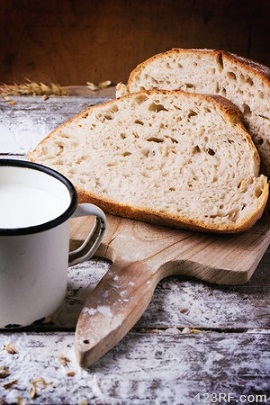
They also help other foods such as meats go a bit further toward filling your belly. You can stretch your valuable food supply by knowing how to combine flour, butter, milk and salt to make biscuits.
Plus, once you know how to make biscuits, you can get fancy by adding fruits, spices (cinnamon is awesome in a biscuit!), vegetables (my favorite is a bit of jalapeno pepper) or sugar to spice them up.
Add some yeast and sugar and you can make bread, too.
Gravy
Gravy is another one of those foods that will help you fill bellies and stretch your food supply. All you need is fat, flour, salt, pepper and water or milk. I personally like to start my gravy by adding water to the browned flour to get the base going, then add some milk to make it creamy but in a pinch it can be made with just water. Or, if you have a cow but a limited supply of water, you can always use just milk.
Butter
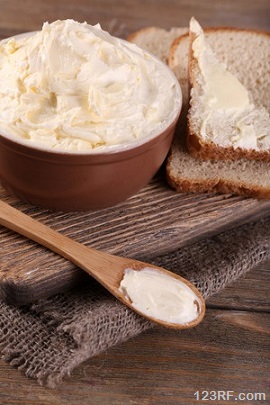
You’ll notice chunks forming, then you’ll see it forming a solid clump. Once you have the solid clump, stop shaking. Pour the contents of the jar through a cheesecloth or linen towel then rinse the butter under cool water. Put the butter in a bowl. Don’t throw away the juice – that’s buttermilk and it makes excellent biscuits and pancakes.
Using a wooden spoon or flat spatula, work the butter around in the bowl so that you press the rest of the liquid out of it. Once you have all of the liquid out of it, add salt to taste and you’re done. You can also use a butter churn if you have one to make larger batches.
Jerky
Jerky is light and is a great source of protein. It’s easy to carry and lasts for a week or two after you make it if you don’t preserve it as long as you prepare it properly.
Slice the meat as thin as you can get it, season it with your choice of seasonings or marinade and hang it to dry over a fire, assuming you don’t have power. You can even dry it in the sun if it’s hot and sunny enough but you need to start in the morning.
Flour
If SHTF, you may not have a source of flour. If you have access to wheat or nuts, you can make your own flour by using a hand mill or a mortar and pestle, though the latter isn’t a great choice because it takes so long. Remember that homemade flour will still have the oils from the nuts or seeds that it’s made from so it will go rancid fairly quickly.
Milk
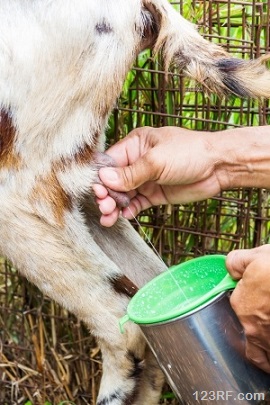
Regardless of which one you choose (or have access to), you need to follow proper sanitation procedures in order to keep bacteria from making you or your family sick.
Wash the udders well and use clean pails. Strain the milk before you drink it.
If you want to go a step further, you can pasteurize it by heating it to 161 degrees for 15 seconds.
Cheese
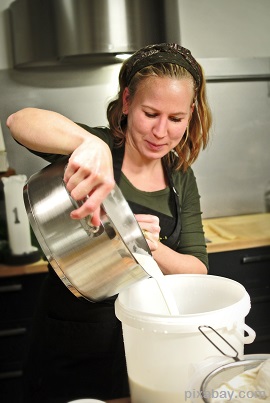
Too much milk and it won’t curdle. Too much acid and it will be tart. Just bring your high-fat milk (you can add cream if you’d like) to just below a simmer, using low heat, then add in the acid and some salt.
You’ll see it instantly separate into curds of cheese and whey, the liquid part. Strain these out by placing it in a cheesecloth or linen towel then squeeze the rest of the whey out. You have a smooth cheese similar to ricotta. If you want it firmer, squeeze it a bit more then chunk it up and add some cream and salt to it and you have cottage cheese.
If you want it a bit firmer, place it in a linen cloth and press it for a couple of hours between two plates with a weight on top. This results in cheese that has a feta consistency. Press it like this overnight and you’ll have cheese firm enough to cut into cubes. You can always spice it up any way that you’d like before pressing it.
For Vegetarians
Without a doubt, food on the fly will require some advance preparation if you’re a vegetarian. You can dehydrate fruits for carbohydrates and can vegetables for more nutrition. If you’re a lacto-vegetarian, biscuits are a good source of carbs, too. If you have access to nuts, you can make nut butters. Beans are going to be a staple for you too, so dry or buy plenty for your stockpile.
Rendered Fat
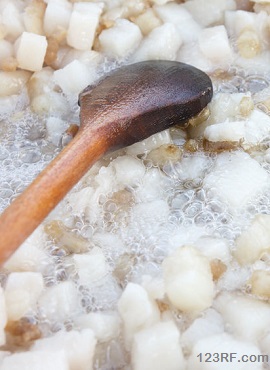
Pemmican
Pemmican was used by Native Americans for centuries as a near-perfect combination of protein, fat and carbohydrates. It’s energy-dense and it takes your body a while to digest it so it’s a good source of long-term energy. You make it simply by using equal parts (use weight, not volume) of dried meat, rendered fat and dried berries.
Pulverize the dried meat and berries into minced portions, almost a powder. Add a handful of the fat and start working it in to the meat and berries. Continue mixing the fat in until you have everything mixed thoroughly and it’s sort of dough-like.
If you have chunks of fat left, continue kneading until it melts into the mixture. Separate out into balls about the size of ping-pong balls and store in an air-tight container. As long as the meat was dried completely and the fat was rendered properly, you don’t need to refrigerate pemmican. Eat is in small portions though because it IS energy-dense. You don’t need much of it to survive and even thrive.
There are many foods that will serve you well in a survival situation but it’s important that you learn how to make them before you NEED to know how. If you have any other food that you think should be included on the list, tell us about it in the comments section below.
Interested in fining the best survival food for your family? CLICK HERE to find out more!
This article has been written by Theresa Crouse for Survivopedia.


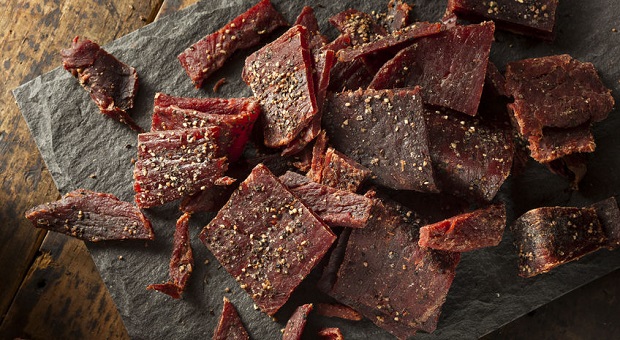





Pingback:10 Basic Foods To Rely On For Survival - Survivalot | September 25, 2015
|
Pingback:10 Basic Foods To Rely On For Survival | TheSurvivalPlaceBlog | September 25, 2015
|
Mahatma Muhjesbude | September 25, 2015
|
Who is that pretty young lady in the picture???!!!
Mike Maness | September 25, 2015
|
That was an odd “staged” picture of someone milking a goat who didn’t have a clue about milking goats. No-one would really milk a goat from behind. You milk a goat from underneath. Sometimes goats defecate when you are milking them. In the picture, the position of the bucket would catch all of that in the milk bucket. The picture is a total gross-out to anyone who really milks goats.
Mike
Fox | September 25, 2015
|
Don’t forget eggs. Either de-hydrate them and powder them, or boil and store in mason jars, either in water or vinegar.
tHE SOUTHERN NATIONALIST | September 25, 2015
|
Here is an 18th Century way to store eggs, put a handful of slaked lime (hydrated lime) into a large jar then put the eggs in and fill with a mixture of water and slaked lime that has been stirred well (use about a handful of the lime to water) these eggs will stay edible for up to two years.
Chris | September 26, 2015
|
How/where do you get “slaked lime”? Is this the same as granulated lime added to garden soils?Are the eggs in shell when placed in the lime?
Mika | April 1, 2016
|
Yes, they’re in the shell. It’s how you make century eggs. They are not very pleasant to look at, and most people can’t get past the smell. No idea where to get the slaked lime, but you should certainly purchase a package of century eggs from your local asian market before you put time into these things.
Billy Scarberry | September 25, 2015
|
Enjoy the content
very much.
I heard the Mormon’s
have been stock piling
food for the “Big Event’!
What are the sources
I can go to to order
survival food?
Billy
Goodlettsville, Tn
Bill | September 25, 2015
|
The Mormon site is “Our Daily Bread “
Fox | September 26, 2015
|
Billy,
Walmart is one source of survival food. You can buy individual flavors first, to find out what you like, then buy in quantity.
I would suggest that you learn how to dehydrate and/or freeze dry your on supplies. Then you know for sure what you are getting.
Semper Fi!
millard altis | September 25, 2015
|
Other important things salt, vitamins. and other pills over the counter that keep for a long time.
jason | September 26, 2015
|
I would have to recommend, more than any other food, stockpiling STARCHY foods. These include beans & legumes, white rice (the oil in the bran of brown rice is prone to rancidity), whole (not milled) grains for hot cereal, whole grain pasta…and if you can find it in dried powdered bulk, potatoes & sweet potatoes, green/unripe plantain & bananas. Squashes are also considered a starch food, but you will have to grow them. It is best to buy whole, rather than milled grains, and mill it fresh yourself. Hand-cranking mills are available that don’t require electricity.
Also include nuts & seeds (to be eaten sparingly), and dehydrated fruits of all kinds. Flaxseeds are especially important because of their omega-3/fatty acid profile. Buy whole GOLDEN flaxseeds and mill it fresh in a coffee grinder (1 Tablespoon daily is sufficient).
With the exception of some nuts, all these products are exceptionally cheap in bulk. They are also some of the most nutritious foods available (yes, including ample protein & essential fats), and the starchiness means less will fill you up. They really do go a long way. The starches are also the best food for feeding your “good” gut bacteria (better than taking probiotics, eating yogurt, etc.). Keeping one’s digestive system in top shape ensures optimal health. Our gut bacteria not only produce important vitamins, enzymes, neuro-chemicals, and other nutrients for us…but also a compromised gut leads to a host of chronic health problems, like autoimmune disease, allergies, weight gain, diabetes/metabolic disorder, cancer, fatigue, malnutrition, chronic infections, yeast overgrowth, mental disorders, and so on. In fact, a predominantly STARCHY food diet (without added fats/oils) is so effective at weight loss & so health promoting that Dr. McDougall wrote the weight-loss book, “The Starch Solution”. You really CAN live on starch foods alone for a long time, if not indefinitely. You may have noticed in the TV reality series, “Naked and Afraid”, contestants are always looking for protein sources, believing they need protein more than anything, when in fact they should be looking for STARCH sources (eg, roots & tubers, starchy fruits, etc.)…because it is starches that will give you the cleanest & most long-lasting energy without taxing your digestive & metabolic system. Make it your staple…and simply add to it whatever additional veggies & fruits you like. If you like or need/crave animal products, it would be best to eat it away from any starchy food because the high fat/oil content will interfere with the body’s metabolism of the sugars in the starch…leading to blood sugar issues & high blood lipids/fats. It is thus really a diet high fats/oils (especially when combined with sugars/starch) in one’s diet that leads to metabolic disorders, diabetes, and weight gain…not sugar/starch by itself.
And beans, legumes, whole grains, and seeds can also be sprouted for additional nutrition if you like sprouts. Also look up a thing called “resistant starch”. It is found mostly in green/unripe plantains & bananas, cooked & COOLED potatoes, cooked & COOLED white rice, and cooked and COOLED beans & legumes. It is considered the best food for your gut flora.
Pingback:Back To Basics: How To Make Jerky For Survival | Survival skills, survival guns, survival guide | September 27, 2015
|
Pingback:Back To Basics: How To Make Jerky For Survivaldisasterdefense.us | disasterdefense.us | September 28, 2015
|
Pingback:Back To Basics: How To Make Jerky For Survival | TheSurvivalPlaceBlog | September 28, 2015
|
nancy sanders | September 28, 2015
|
you made an error in the directions for biscuits, you left out any leavening, with-out adding baking powder or baking soda along with some buttermilk { or milk & vinegar } I don’t know what your results would be, but it won’t be biscuits…. also, your gravy direction are not totally explanatory…you say to add water to the browned flour, but you don’t explain, for the benefit of novice cooks. how you come about having browned flour.
ric | October 8, 2015
|
It seems everyone says store grains. I eat paleo and believe grains are not really food for humans, if you disagree you can look into it yourself. My youngest son age 5 now love sardines and raw carrots. Something people seem to forget when storing food is fresh foods. Sprouting seeds can be stored and you can have fresh food in days. No where was mentioned fruits or veggies. Saloirs in the 1700s and earlier suffered from scurcy due to lack a V-C. Following this plan you might as well.
Pingback:» Back To Basics: How To Make Jerky For Survival - Prepper Ways | May 9, 2016
|
Dean Gabbert | October 28, 2016
|
What about sourdough?
I’ve yet to see anyone include this as a long time survival food.
Thanks
Dean